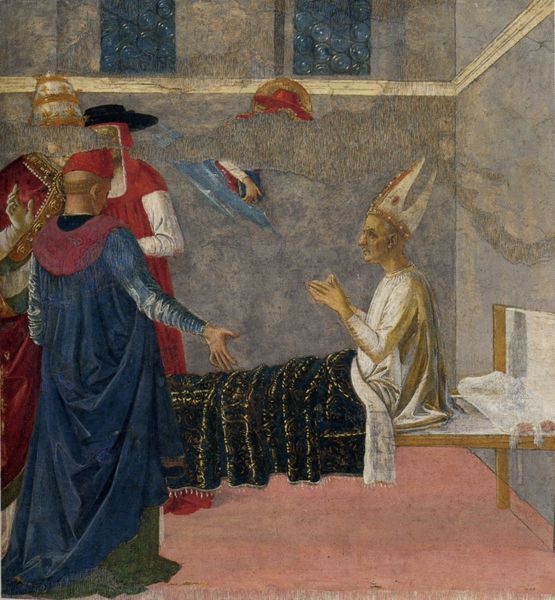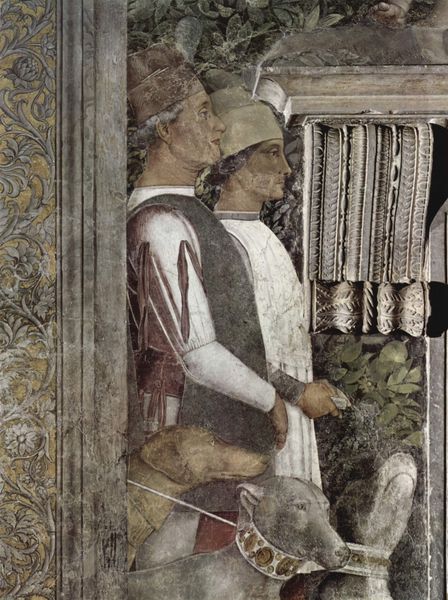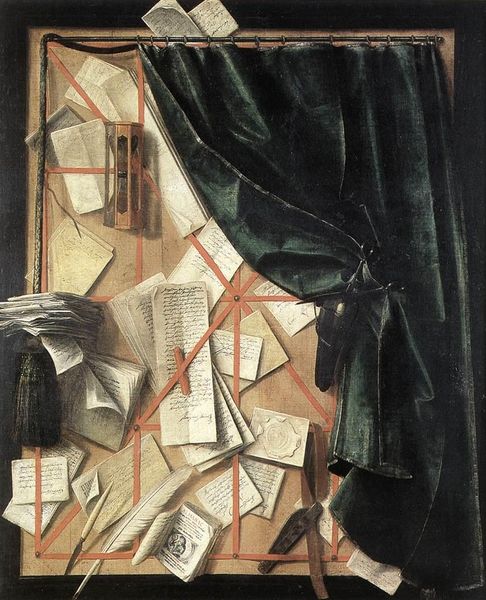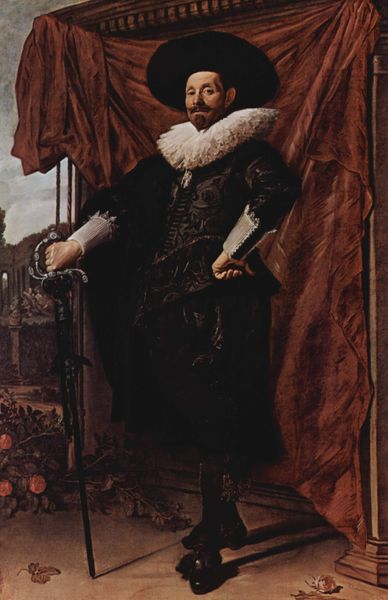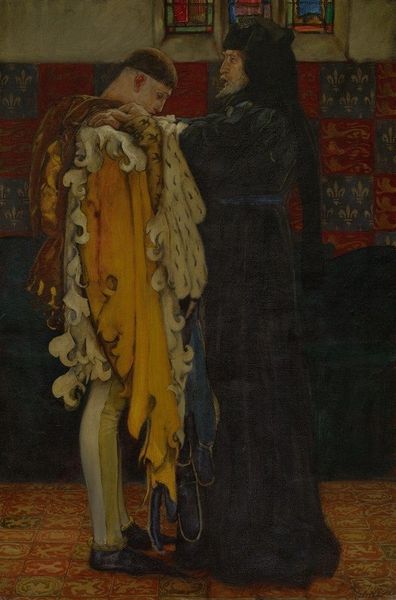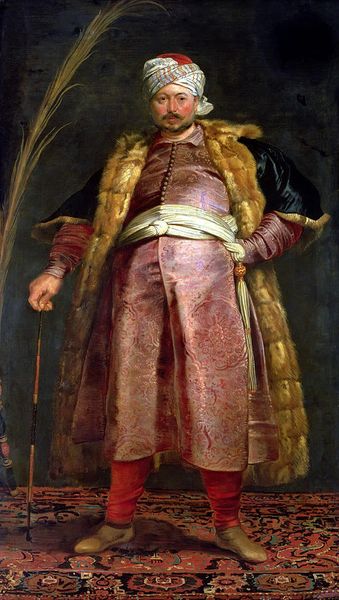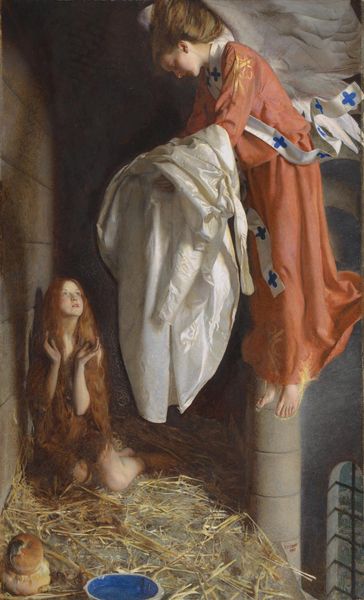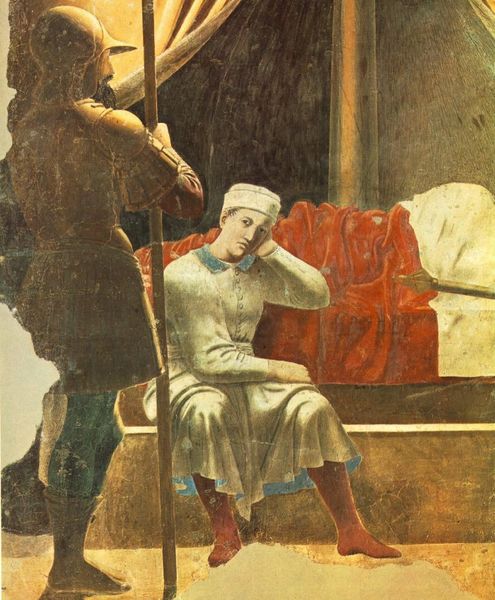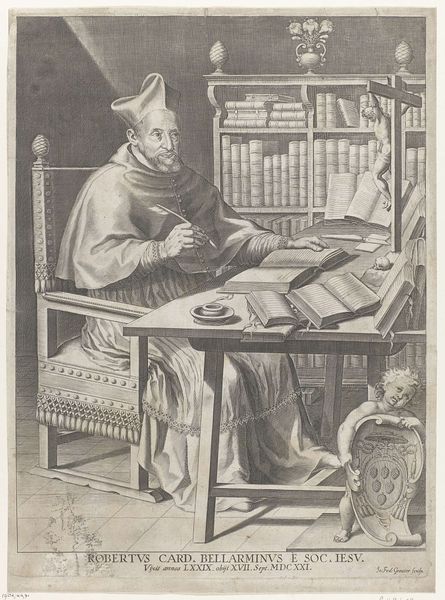
painting, oil-paint, photography
#
portrait
#
narrative-art
#
painting
#
oil-paint
#
photography
#
oil painting
#
symbolism
#
history-painting
Copyright: Public domain
James Tissot’s “Portrait of the Pilgrim” is composed of watercolor on paper. Its devotional still-life and portrait elements prompt questions about the artist's process. Tissot, an academic painter, employed watercolors in a looser manner compared to his precise oil paintings, perhaps experimenting with spontaneity. The paper's absorbent qualities lend a soft, diffused quality to the composition. Notice the build-up of layers to create depth and texture, particularly evident in the rendering of the metallic objects, like the candlesticks and crucifix. The quick-drying nature of watercolor allowed Tissot to capture the fleeting effects of light and shadow. The blurred edges and translucent washes create an atmosphere of reverence and introspection. Yet, the use of watercolor, traditionally associated with sketching or preparatory studies, challenges the conventional hierarchy between fine art and craft. The intimate scale and delicate handling of the medium invite contemplation on the artist’s personal relationship with the subject matter, and the amount of labor and time he devoted to the image. By attending to the materials and the making, we gain a deeper understanding of Tissot's artistic intentions and the cultural significance of this work.
Comments
No comments
Be the first to comment and join the conversation on the ultimate creative platform.

